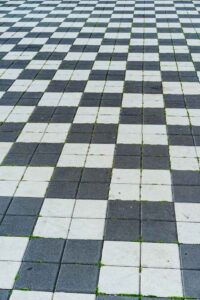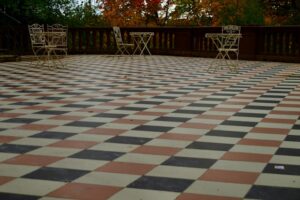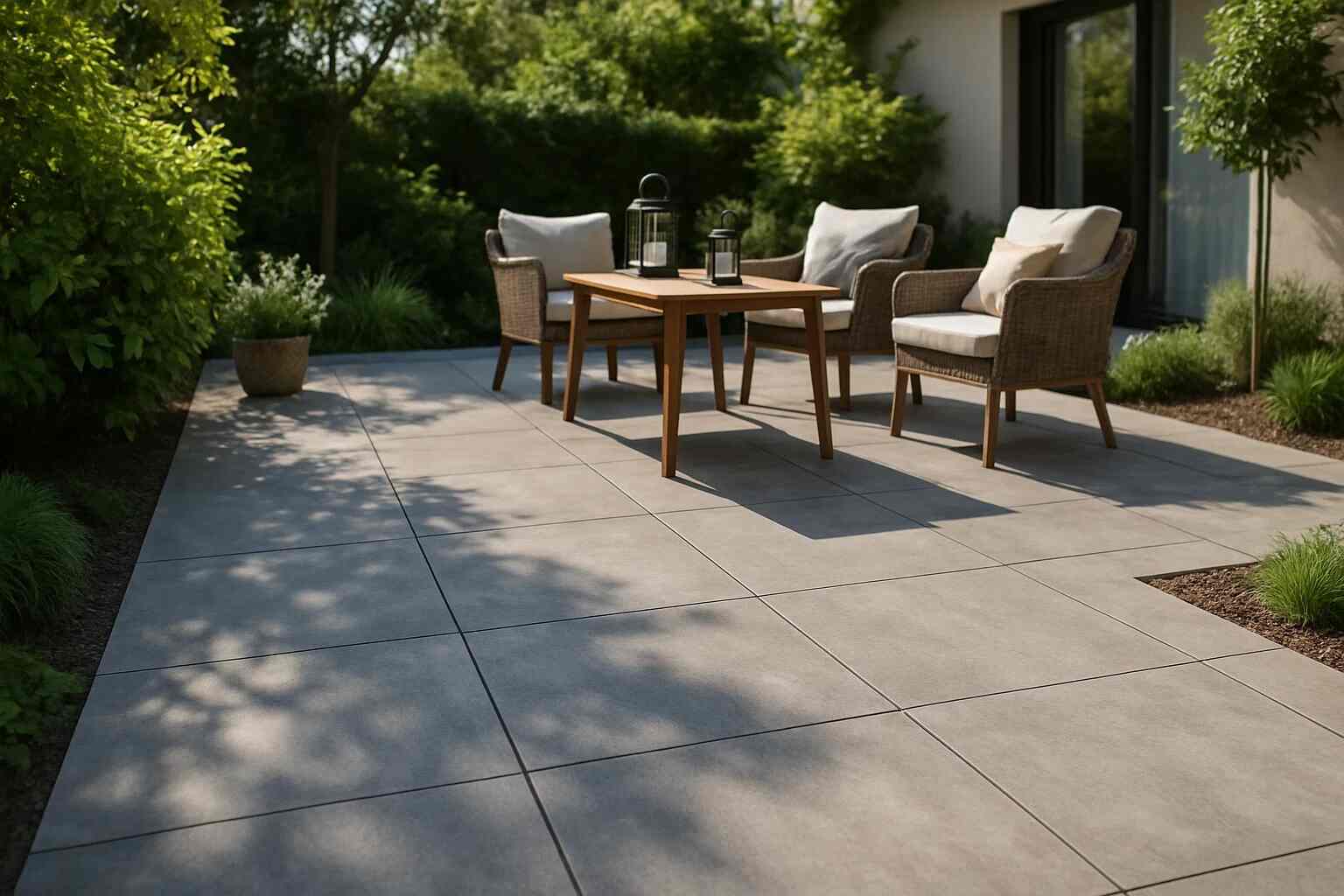Introduction
Transforming your outdoor space begins from the ground up. Selecting the right outdoor floor tiles is crucial for creating a durable, stylish, and functional patio, balcony, or garden path. With so many materials, styles, and finishes available, making a choice can feel overwhelming. This guide will walk you through everything you need to know, from understanding different tile types to installation and maintenance. We’ll help you find the perfect tiles to elevate your outdoor living area, ensuring it looks great and lasts for years. Get ready to build an outdoor oasis you can be proud of.
Understanding the Basics of Outdoor Floor Tiles
Outdoor floor tiles are specifically designed to withstand the elements. Unlike indoor tiles, they must endure temperature fluctuations, moisture, and direct sunlight without cracking, fading, or becoming slippery. Key features to look for include frost resistance, a high slip-resistance rating (or coefficient of friction), and durability. The material you choose will heavily influence these properties, making it the most important decision in your selection process.
Key Features to Consider
When shopping for outdoor tiles, focus on a few technical specifications. Porosity is a major factor; low-porosity tiles absorb less water, making them ideal for freeze-thaw climates. Also, check the PEI (Porcelain Enamel Institute) rating, which indicates a tile’s hardness and durability. For outdoor use, a PEI rating of 4 or 5 is recommended for high-traffic areas.
Popular Materials for Outdoor Floor Tiles
The material of your tile dictates its look, feel, and longevity. Each option offers unique benefits, from the natural beauty of stone to the robust performance of porcelain. Understanding the differences will help you match your aesthetic goals with your practical needs for durability and maintenance.
Porcelain Tiles
Porcelain is a top choice for outdoor floor tiles due to its exceptional density and strength. It has extremely low water absorption, making it frost-proof and resistant to staining. Porcelain tiles are available in countless designs, including realistic wood, stone, and concrete effects, offering great design flexibility without the maintenance of natural materials.
Ceramic Tiles
While often confused with porcelain, ceramic tiles are less dense and more porous. This makes them more suitable for covered outdoor areas like porches that are shielded from heavy rain and frost. They are generally more affordable than porcelain but require sealing to protect against moisture and stains.
Natural Stone Tiles
Natural stone, such as slate, granite, and travertine, brings an unmatched, organic elegance to any outdoor space. Each stone tile is unique, with natural variations in color and texture. While beautiful, stone is often more porous and may require regular sealing to prevent staining and water damage. Granite is very durable, while slate offers excellent slip resistance.
The Importance of Slip Resistance
Safety is a primary concern for any outdoor flooring. Surfaces can become slippery when wet from rain, dew, or pool splashes. When choosing outdoor floor tiles, always check their slip-resistance rating. This is often measured by a Coefficient of Friction (COF) value or an “R” rating (R9-R13). For outdoor use, an R11 rating or higher is recommended, especially for areas around pools or in rainy climates.
Design and Aesthetics: Styling Your Outdoor Space
Your outdoor floor tiles set the stage for your entire exterior design. Do you want a modern, sleek look or a rustic, natural vibe? The color, size, and pattern of your tiles can dramatically influence the atmosphere.
- Large-format tiles can make a small patio feel more spacious and contemporary.
- Textured tiles that mimic wood or stone can create a warm, inviting ambiance.
- Patterned tiles can be used to define a specific area, like an outdoor dining space.
Consider how the tile color will complement your home’s exterior and your outdoor furniture. Lighter colors can make a space feel brighter and larger but may show dirt more easily. Darker tiles can create a sophisticated, dramatic look.
Preparing for Installation
Proper preparation is the key to a long-lasting and professional-looking tile installation. The ground surface must be solid, level, and clean. A concrete slab is the most common and reliable base for outdoor floor tiles. Any cracks or uneven spots on the slab must be repaired before you begin laying the tiles. Ensure the surface has a slight slope (about a 2% grade) away from your house to promote proper water drainage and prevent pooling.
The Installation Process for Outdoor Floor Tiles
Laying outdoor floor tiles is a project that can be done by a confident DIYer, but hiring a professional is often wise for the best results. The process typically involves applying a suitable outdoor-grade thin-set mortar to the prepared base. The tiles are then set into the mortar, using spacers to ensure uniform grout lines. It’s crucial to use an adhesive and grout specifically formulated for exterior use to handle temperature changes and moisture.
Maintenance and Care for Your Tiles
One of the biggest advantages of outdoor floor tiles is their low maintenance. Most require little more than regular sweeping to remove debris and occasional washing with a mild detergent and water. For natural stone, periodic sealing may be necessary to protect it from stains and moisture. Always check the manufacturer’s recommendations for specific cleaning products to avoid damaging the tile surface.
Cost Considerations for Outdoor Tiles
The budget for your outdoor tiling project will depend on several factors. The price of the tiles themselves varies widely by material, with ceramic often being the most affordable and high-end natural stone being the most expensive.
Remember to also factor in the cost of:
- Subfloor preparation materials
- Adhesive, grout, and sealant
- Tools and equipment if you’re doing it yourself
- Labor costs if you hire a professional installer
Eco-Friendly Outdoor Flooring Options
For those looking to make a greener choice, several sustainable options are available. Look for tiles made from recycled materials, such as recycled glass or porcelain. Some natural stone is quarried using more environmentally friendly practices. Additionally, choosing locally sourced materials can reduce the carbon footprint associated with transportation. Permeable pavers, which allow water to pass through, are another excellent choice for sustainable water management.
FAQs About Outdoor Floor Tiles
Can I use indoor tiles outside?
It is strongly advised not to use indoor tiles for outdoor applications. Indoor tiles are not manufactured to withstand temperature changes, direct sun, or moisture. They can crack in freezing weather, fade from UV exposure, and become extremely slippery when wet, posing a significant safety hazard.
What is the most durable type of outdoor floor tile?
Porcelain tiles are widely considered the most durable option for outdoor use. They are dense, non-porous, and highly resistant to scratches, stains, and frost. High-density natural stones like granite are also exceptionally durable but may require more maintenance in the form of sealing.
How do I keep my outdoor tiles from being slippery?
To prevent slipperiness, choose tiles with a textured surface and a high slip-resistance rating (an R-rating of R11 or higher). Keeping the tiles clean from algae or moss growth, which can make surfaces slick, is also important for maintaining safety.
What is the best base for outdoor tiles?
A solid, level concrete slab is the ideal base for installing outdoor floor tiles. It provides the stability and durability needed to support the tiles and prevent cracking or shifting over time. Proper preparation of this base, including ensuring it has a slight slope for drainage, is critical for a successful installation.
Do outdoor tiles need to be sealed?
Whether your tiles need sealing depends on the material. Porcelain tiles are so dense that they do not require a sealant. Most natural stone tiles, however, are more porous and should be sealed periodically to protect them from water absorption, staining, and freeze-thaw damage. Always follow the manufacturer’s recommendations.
Can you lay outdoor tiles directly on grass or soil?
No, you cannot lay outdoor tiles directly onto grass or soil. These surfaces are unstable and will shift over time, causing the tiles to crack and the grout lines to fail. A solid, prepared base like a concrete slab or a compacted aggregate foundation is necessary for a lasting installation.
Conclusion
Choosing the right outdoor floor tiles is a foundational step in creating a beautiful and functional outdoor living area. By considering factors like material, durability, slip resistance, and design, you can select a product that not only meets your aesthetic vision but also withstands the test of time and weather. From the robust utility of porcelain to the timeless beauty of natural stone, there is a perfect tile for every space and budget. Proper installation on a well-prepared base and consistent maintenance will ensure your investment remains safe, stunning, and enjoyable for many years.
Now that you’re equipped with this knowledge, you are ready to start planning your project. Explore our range of outdoor floor tiles to find inspiration for your space. If you have any questions, feel free to leave a comment below or subscribe to our newsletter for more tips and design ideas.
Your Ultimate Guide to Bathroom Floor Tiles: Trends, Tips, and Top Choices

